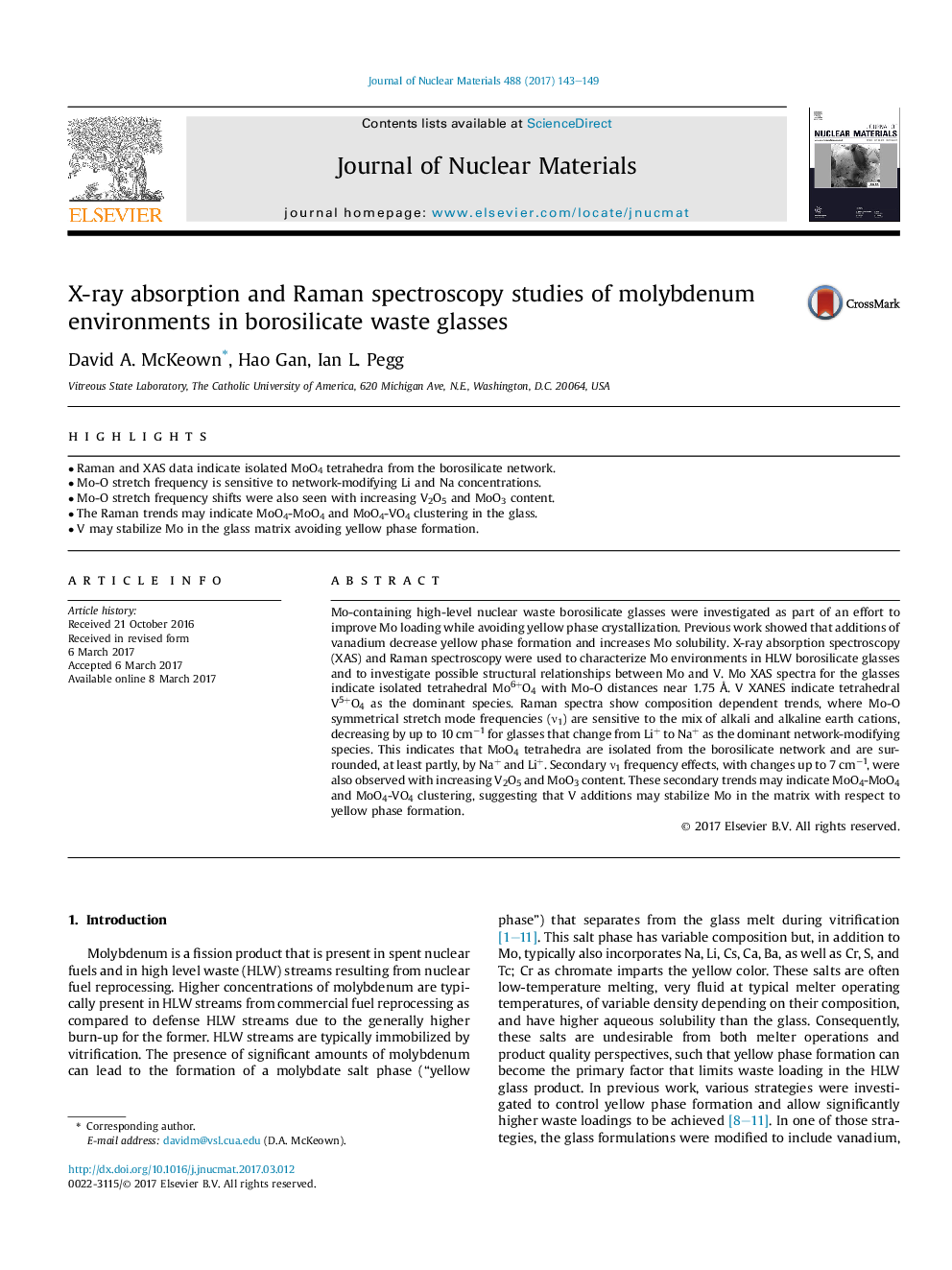| Article ID | Journal | Published Year | Pages | File Type |
|---|---|---|---|---|
| 5454180 | Journal of Nuclear Materials | 2017 | 7 Pages |
â¢Raman and XAS data indicate isolated MoO4 tetrahedra from the borosilicate network.â¢Mo-O stretch frequency is sensitive to network-modifying Li and Na concentrations.â¢Mo-O stretch frequency shifts were also seen with increasing V2O5 and MoO3 content.â¢The Raman trends may indicate MoO4-MoO4 and MoO4-VO4 clustering in the glass.â¢V may stabilize Mo in the glass matrix avoiding yellow phase formation.
Mo-containing high-level nuclear waste borosilicate glasses were investigated as part of an effort to improve Mo loading while avoiding yellow phase crystallization. Previous work showed that additions of vanadium decrease yellow phase formation and increases Mo solubility. X-ray absorption spectroscopy (XAS) and Raman spectroscopy were used to characterize Mo environments in HLW borosilicate glasses and to investigate possible structural relationships between Mo and V. Mo XAS spectra for the glasses indicate isolated tetrahedral Mo6+O4 with Mo-O distances near 1.75 à . V XANES indicate tetrahedral V5+O4 as the dominant species. Raman spectra show composition dependent trends, where Mo-O symmetrical stretch mode frequencies (ν1) are sensitive to the mix of alkali and alkaline earth cations, decreasing by up to 10 cmâ1 for glasses that change from Li+ to Na+ as the dominant network-modifying species. This indicates that MoO4 tetrahedra are isolated from the borosilicate network and are surrounded, at least partly, by Na+ and Li+. Secondary ν1 frequency effects, with changes up to 7 cmâ1, were also observed with increasing V2O5 and MoO3 content. These secondary trends may indicate MoO4-MoO4 and MoO4-VO4 clustering, suggesting that V additions may stabilize Mo in the matrix with respect to yellow phase formation.
